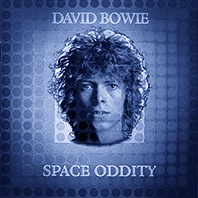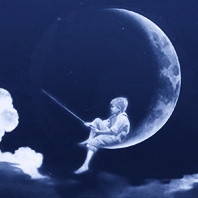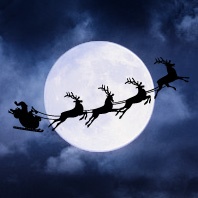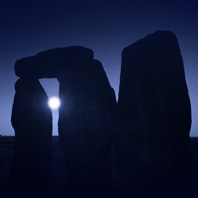Sir Charles Spencer Chaplin (1889–1977) is considered one of the first movie stars ever and made film history with his acting and his works. He is also one of the few artists who managed the transition from silent films to sound films.
Because of using archetypal imagery and symbols in his films, it is natural that the moon could also play a part somewhere. We found four references:
Read more
Moonlight is with only 1 lux brightness a thousand times weaker than the sun light with more than 100,000 lux. Nevertheless, you sometimes get the feeling that it is so bright in the full moon that you should be able to read. We would like to give this a try and invite all full moon friends to start on a small reading test in the full moon light and to report back the results.
Read more
Columns:
Worth reading,
Worth seeing | 14 Comments
The song »Space Oddity« by the British musician David Bowie (1947–2016) made history. Bowie’s inspiration for this piece composed in 1968, was the science fiction classic »2001: A Space Odyssey« by Stanley Kubrick.
It tells the fictional story of the astronaut Major Tom, who leaves his spacecraft during a flight through space and says his farewell to the people. The last four lines of the lyrics also mention the Moon:
Read more
The American film studio DreamWorks SKG was founded by movie director Steven Spielberg, Disney head of animation Jeffrey Katzenberg and music producer David Geffen, in 1994 (the initials of the founders create the “SKG” in the company’s name). The opening credits of its movies, DreamWorks shows a boy, who sits on the waxing crescent moon while fishing and being surrounded by impressive cloud formations.
Read more
Ho ho ho – not long now and Christmas will bring joy to the hearts of the people and “Santa Claus”, the name of Father Christmas in the United States and many other countries, will ride with his flying sleigh across the sky on Christmas Eve, pulled by his reindeer with plenty of gifts in his huge sack. Looking at this imposing depiction of this nightly sleigh ride, the full moon is quite often found in the sky.
Read more
As is generally known, the Moon is not a disc but a sphere and one could ask the question if we actually get to see different sides of this Moon sphere? The answer is: no! At least this is true for the observer from Earth.
Indeed, we always see one half of the Moon. This is because the Moon is locked into the Earth rotation. This is called »synchronous rotation«. It means that we are never able to see the side of the Moon facing away from us. And until it was possible to photograph the reverse of the Moon with space probes, nobody knew what we would find or how it would look.
Read more
Everyone is familiar with the silhouette of the Stonehenge rocks in the southern English county of Wiltshire, one of the truly ancient structures of human kind that continues to fascinate because of its archaic construction and mystical presence. Maybe it reminds us people of our origin and of something we often tend to forget amid our hectic everyday world: simplicity.
At the same time, the building of Stonehenge has been everything but easy back then. The age of the grounds is estimated to be more than 5000 years. Experts assume, it took many millions of working hours to dress and transport the up to 50 tons heavy rocks by hand and to erect them in the well-known formation. In particular the lintels, on top of the upright stones, leave us in awe.
Read more
When Neil Armstrong became the first human being that set foot on the moon within the scope of the Apollo 11 mission in 1969, he said the famous words »That’s one small step for (a) man … one … giant leap for mankind« and hence erected a monument for this historic move. Rarely in history, did the success of human research and development work, condense so impressively in just one moment.
Read more
In China, the September full moon is a special day. It is the day of the Moon Festival or Mid-Autumn Festival. This festival is traditionally celebrated on the 15th day of the eighth month of the old Chinese calendar. Because the moon month averages 29.5 days in length, the 15th day is usually a full moon day, however, there are slight shifts in some years. The Moon Festival is one of the most important festivals in China, but is also held in Korea and Vietnam as well as in the respective districts in big cities around the globe.
Read more
Cyrano de Bergerac (1619–1655) was a French writer, who was less famous for his own pieces [*], but better known through the writings about him by Edmond Rostand (1868–1918) from 1897. The piece was called just like himself “Cyrano de Bergerac” and premiered as a stage play in Paris in the same year.
Up until today, it has been staged and filmed many times. The movie that is surely most famous is the one with Gerard Depardieu in the leading role from 1990. All dialogues are versified, which lends everything a historicizing but also an intense, poetic effect.
Read more
There are stories, they are so odd that they are hard to believe. Just a few days ago we came across this report, saying some multi-billionaires teamed up in order to buy the Moon. The motive for this unusual proposal is apparently an investment into future projects. It has been known for some time that the Moon could be significant for future utilization by people, and it therefore becomes a lucrative economic investment.
This is particularly about possible mineral resources, but also about the feasibility of creating moon colonies. Meanwhile, scientific studies have shown that the cultivation of plants – observed over extended periods of time – could create something like an atmosphere containing oxygen around the Moon. This is how a colonization on the Moon would be conceivable and it seems to be almost for certain that there should be enough volunteers, who would be willing to move away from Earth.
Read more










